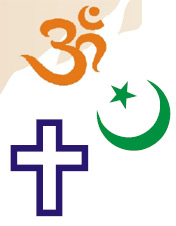Recently, I have read the book Life of Pi written by Yann Martel and I thought it was great and interesting. They have taken a controversial topic of religion and made it interesting for everyone to read it. In the text, they made it clear that many people do not believe in faith as much as we did before since science has developed. Many people find it ridiculous that God is the one that created the world even though it is scientifically proven it is not.
Pi recognizes every little part of his life as something that God has given him. “She came floating on an island of bananas in a halo of light, as lovely the Virgin Mary”, Pi sees the mother of Jesus in Orange Juice that also represents his own mother. Through the archetypal lens of Pi’s story, I noticed that every main part of the story resembles a religious symbol. Orange Juice and Pi’s mother share kind and caring characteristics which remind him of Jesus’s mother, beautiful and pure.
 |
| Pi's Mother |
 |
| Orange Juice |
Pi creates two different stories about his journey after being stranded in the middle of the Pacific Ocean and he says one of them with animals and one with humans. While the one with the animals was about how all of them had killed each other leaving the tiger and Pi on the boat at the end. The other story had the cook who killed and ate the sailor and Pi’s mother and then Pi kills and eats the cook. In both stories, the characters were similar, for example, the mother was the orangutan and the cook was the hyena.
 |
| Pi, Tiger, Orangutan, Hyena, Zebra |
Pi asked, “So tell me, since it makes no factual difference to you and you can't prove the question either way, which story do you prefer? Which is the better story, the story with animals or the story without animals”. Obviously, the answer is the story with the animals because it sounds better for animals to eat each other but when you hear people eating each other you would feel disgusted. But even though no one knows the truth of what is the actual story it does not mean that we cannot believe in either of the stories.
Pi’s archetypal narrative of these stories represents how he sees religious beliefs. I can see that he is trying to say that even though we cannot prove that religious faith and God is not real it does not mean that we do not have to believe in them. In my opinion, this is true because even though we have never seen God I do believe in God because I think faith gives us strength and hope to those who need help.




